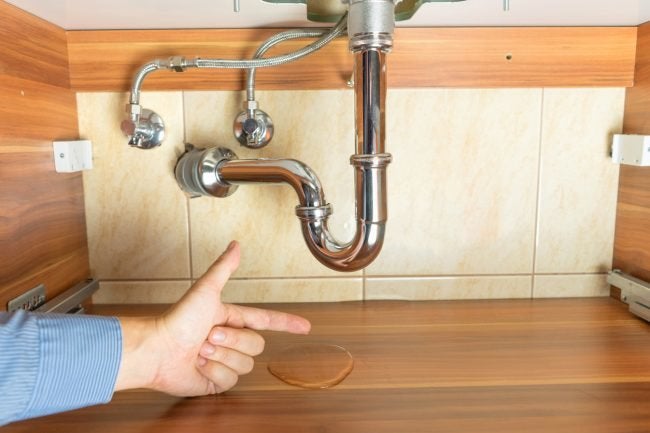Overview To Water Leakage Detection At Home
Overview To Water Leakage Detection At Home
Blog Article
Every person will have their personal concepts with regards to Leaking water lines.

Early detection of leaking water lines can reduce a prospective calamity. Some little water leakages may not be visible.
1. Take A Look At the Water Meter
Every residence has a water meter. Examining it is a surefire way that helps you find leaks. For starters, shut off all the water sources. Make sure no person will certainly purge, make use of the tap, shower, run the cleaning equipment or dishwasher. From there, most likely to the meter and also watch if it will certainly transform. Since no one is utilizing it, there should be no movements. If it moves, that shows a fast-moving leakage. If you spot no changes, wait an hour or 2 and also examine back once again. This indicates you may have a slow leakage that can also be underground.
2. Inspect Water Consumption
Assess your water costs as well as track your water consumption. As the one paying it, you should see if there are any type of inconsistencies. If you find sudden changes, regardless of your usage coinciding, it means that you have leaks in your plumbing system. Bear in mind, your water bill must drop under the same array monthly. An unexpected spike in your expense shows a fast-moving leak.
A stable boost every month, also with the same routines, shows you have a sluggish leakage that's additionally slowly intensifying. Call a plumber to extensively examine your residential property, specifically if you feel a warm location on your flooring with piping underneath.
3. Do a Food Coloring Test
When it comes to water usage, 30% comes from commodes. If the color somehow infiltrates your bowl during that time without flushing, there's a leak between the storage tank as well as dish.
4. Asses Outside Lines
Do not fail to remember to check your outdoor water lines also. Needs to water leak out of the connection, you have a loose rubber gasket. One little leakage can lose lots of water as well as spike your water costs.
5. Examine the situation and also evaluate
House owners ought to make it a practice to examine under the sink counters as well as even inside closets for any type of bad odor or mold development. These 2 red flags indicate a leakage so prompt focus is needed. Doing routine assessments, even bi-annually, can conserve you from a major trouble.
A lot more importantly, if you recognize your house is already old, maintain a watchful eye on your heating units, pipes, pipelines etc. Look for stainings and deteriorating as many pipelines and devices have a life expectancy. They will certainly also naturally deteriorate because of tear and put on. Don't wait for it to rise if you suspect leaking water lines in your plumbing system. Call a specialist plumber right now so you do not wind up with an awful mess in your house.
Early discovery of dripping water lines can minimize a possible disaster. Some tiny water leaks may not be noticeable. Examining it is a proven means that aids you discover leaks. One tiny leak can throw away loads of water and surge your water expense.
If you think dripping water lines in your plumbing system, do not wait for it to intensify.
WARNING SIGNS OF WATER LEAKAGE BEHIND THE WALL
PERSISTENT MUSTY ODORS
As water slowly drips from a leaky pipe inside the wall, flooring and sheetrock stay damp and develop an odor similar to wet cardboard. It generates a musty smell that can help you find hidden leaks.
MOLD IN UNUSUAL AREAS
Mold usually grows in wet areas like kitchens, baths and laundry rooms. If you spot the stuff on walls or baseboards in other rooms of the house, it’s a good indicator of undetected water leaks.
STAINS THAT GROW
When mold thrives around a leaky pipe, it sometimes takes hold on the inside surface of the affected wall. A growing stain on otherwise clean sheetrock is often your sign of a hidden plumbing problem.
PEELING OR BUBBLING WALLPAPER / PAINT
This clue is easy to miss in rooms that don’t get much use. When you see wallpaper separating along seams or paint bubbling or flaking off the wall, blame sheetrock that stays wet because of an undetected leak.
BUCKLED CEILINGS AND STAINED FLOORS
If ceilings or floors in bathrooms, kitchens or laundry areas develop structural problems, don’t rule out constant damp inside the walls. Wet sheetrock can affect adjacent framing, flooring and ceilings.
https://www.servicemasterbyzaba.com/blog/how-to-detect-water-leakage-in-walls/

I hope you enjoyed our part on Finding hidden leaks. Many thanks for finding the time to browse our content. Enjoyed reading our write-up? Please share it. Let another person find it. We take joy in reading our article about Top leak detection hacks.
Report this page